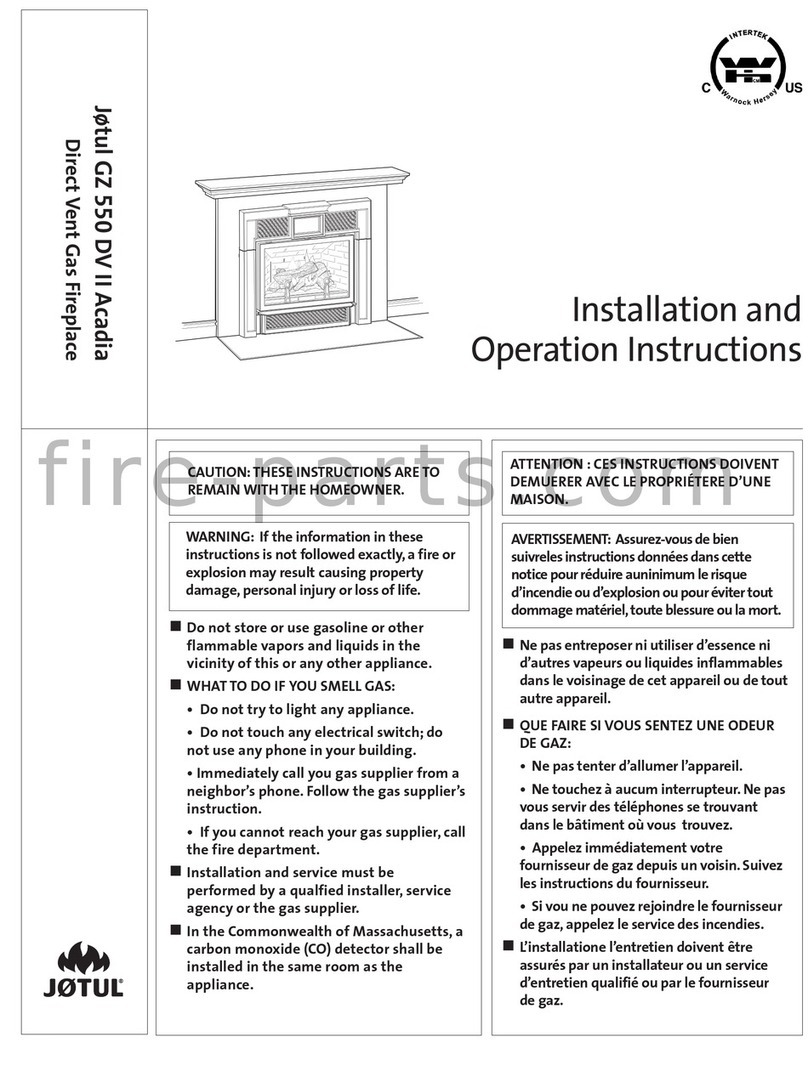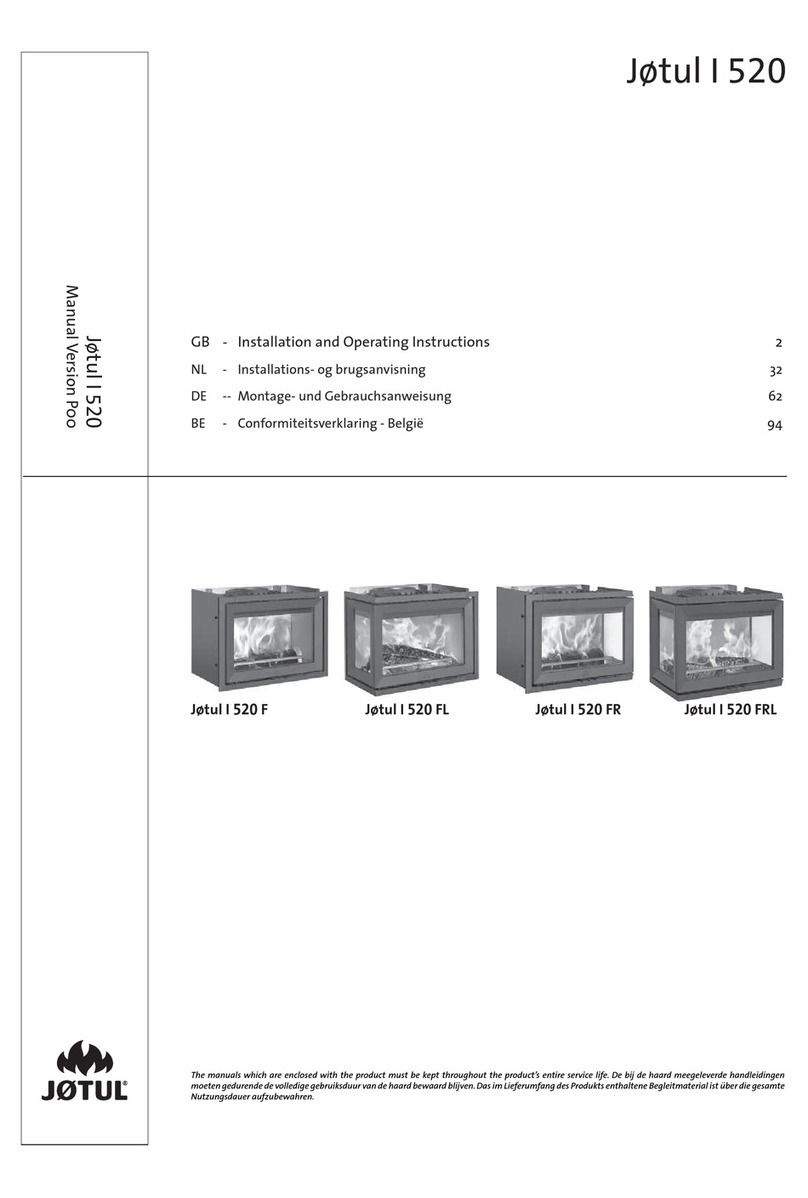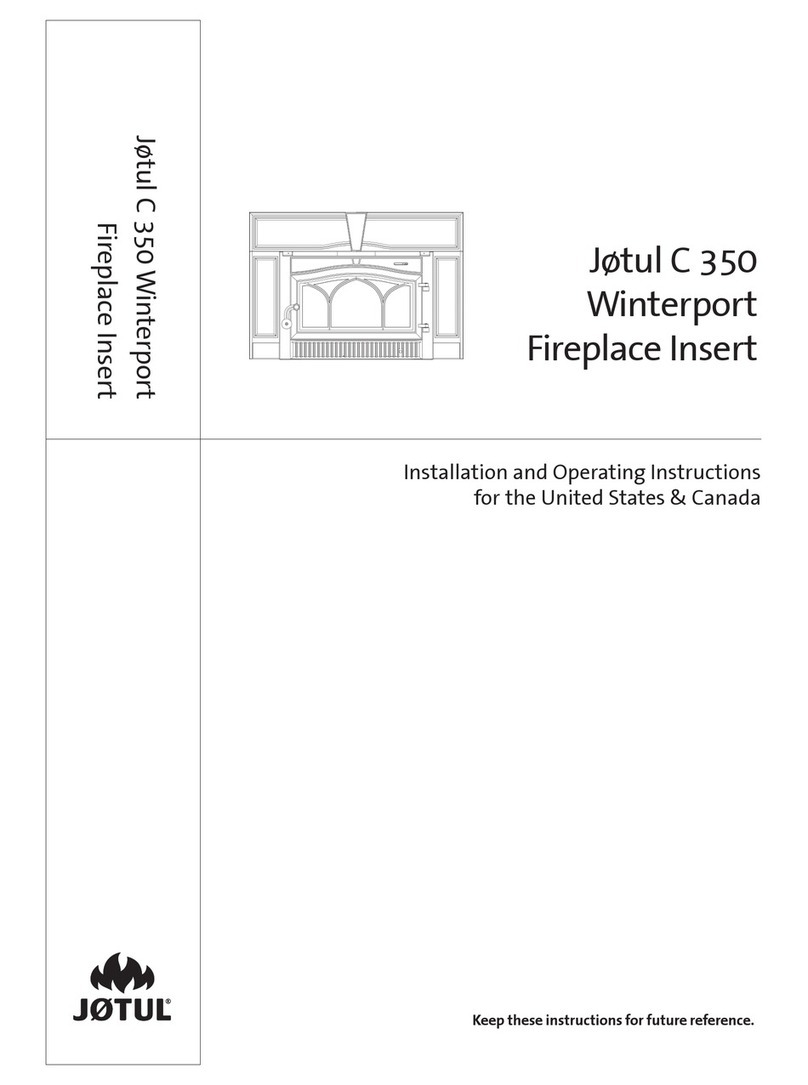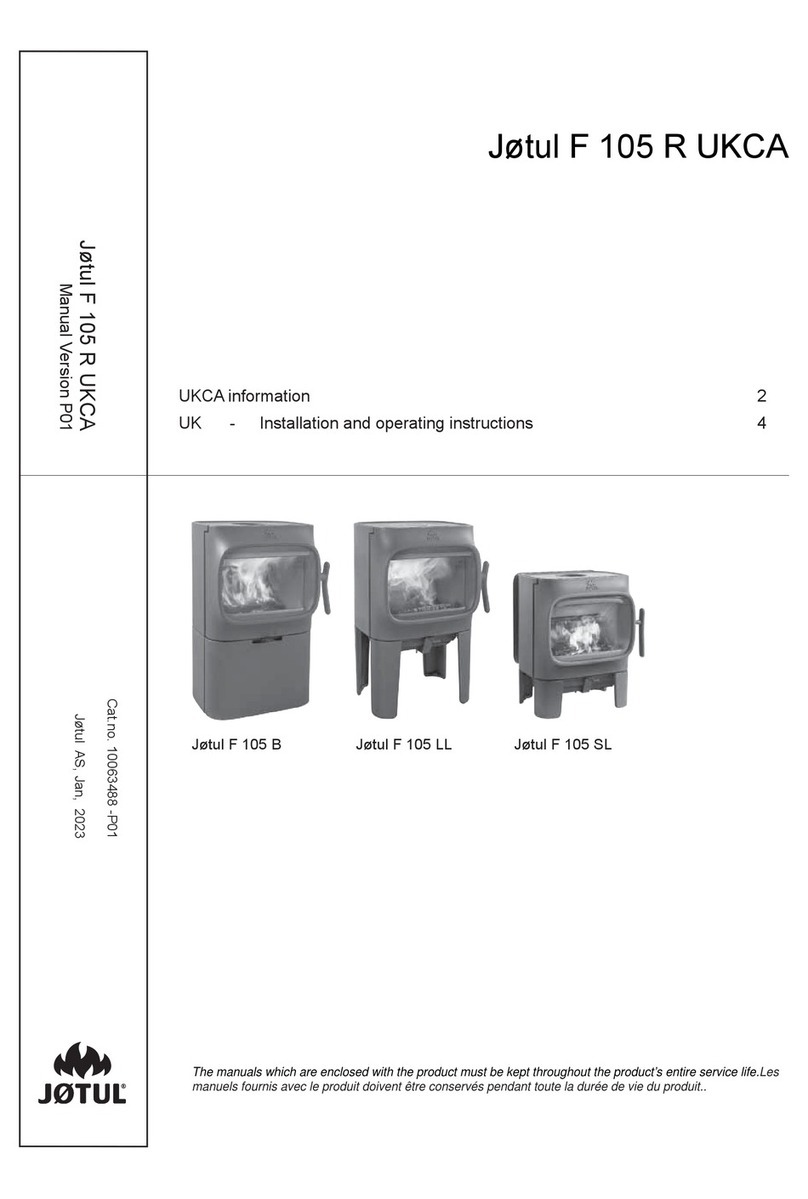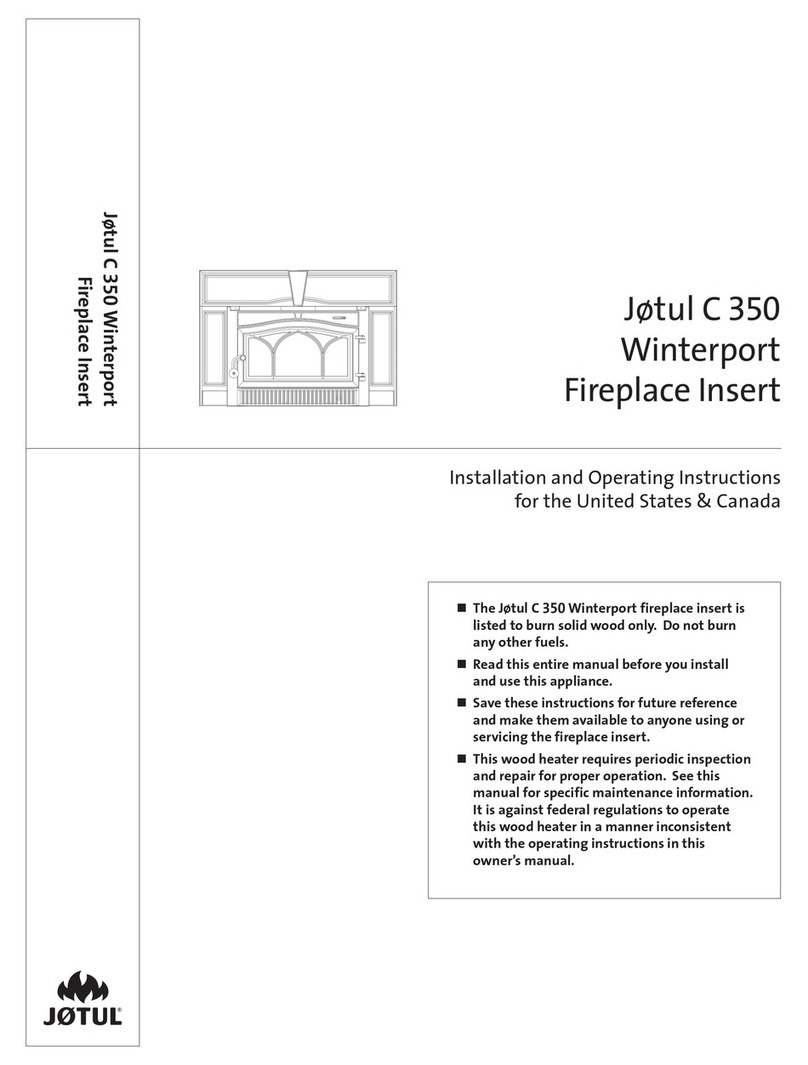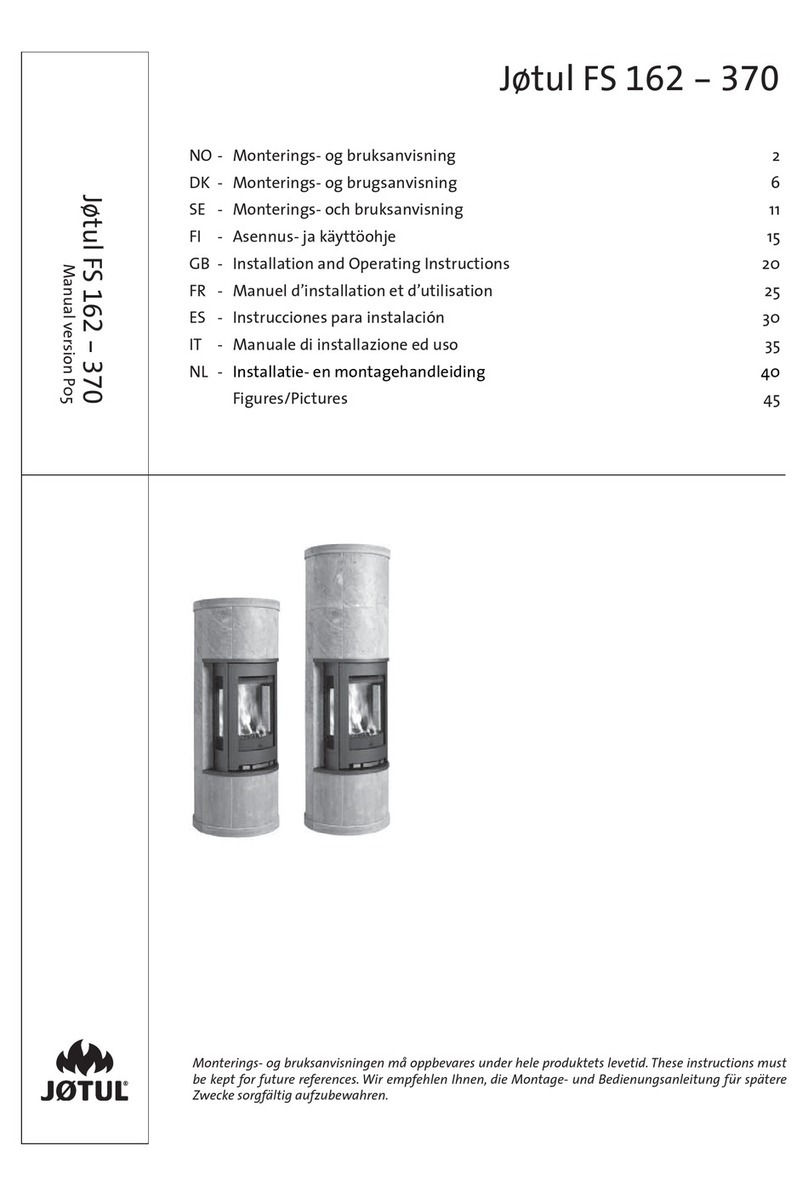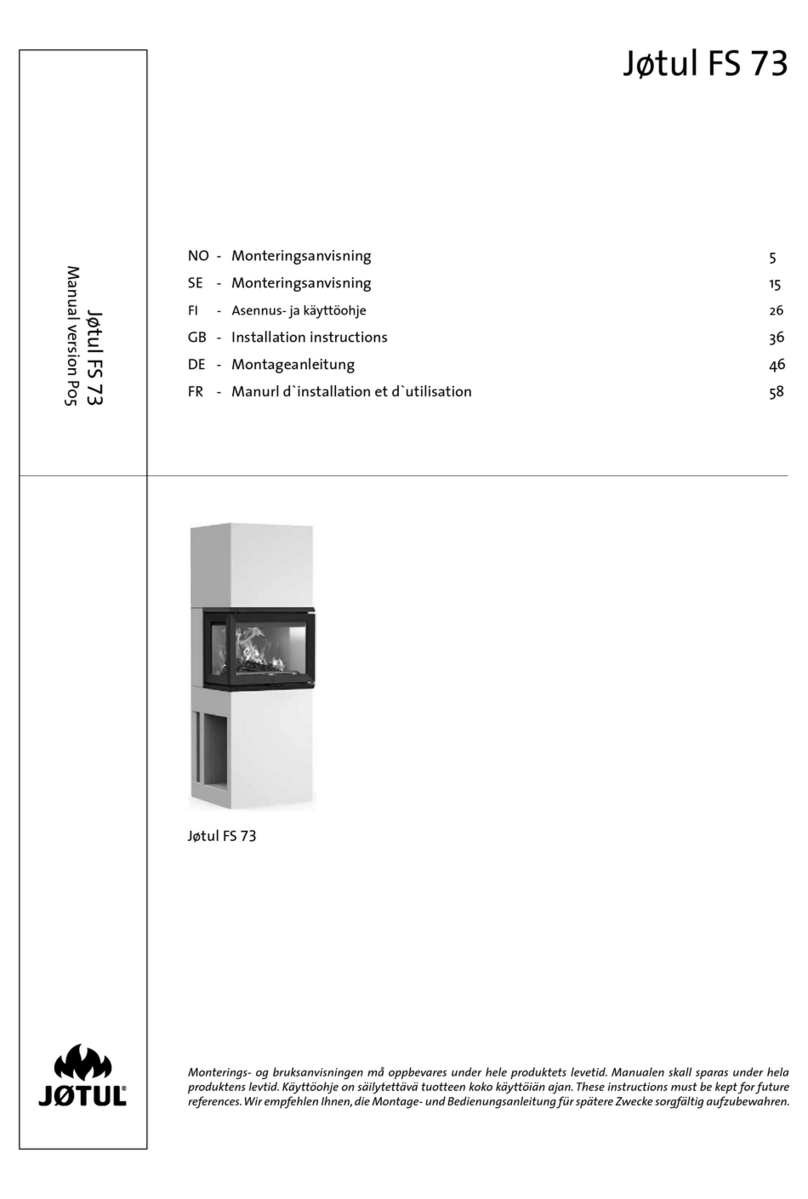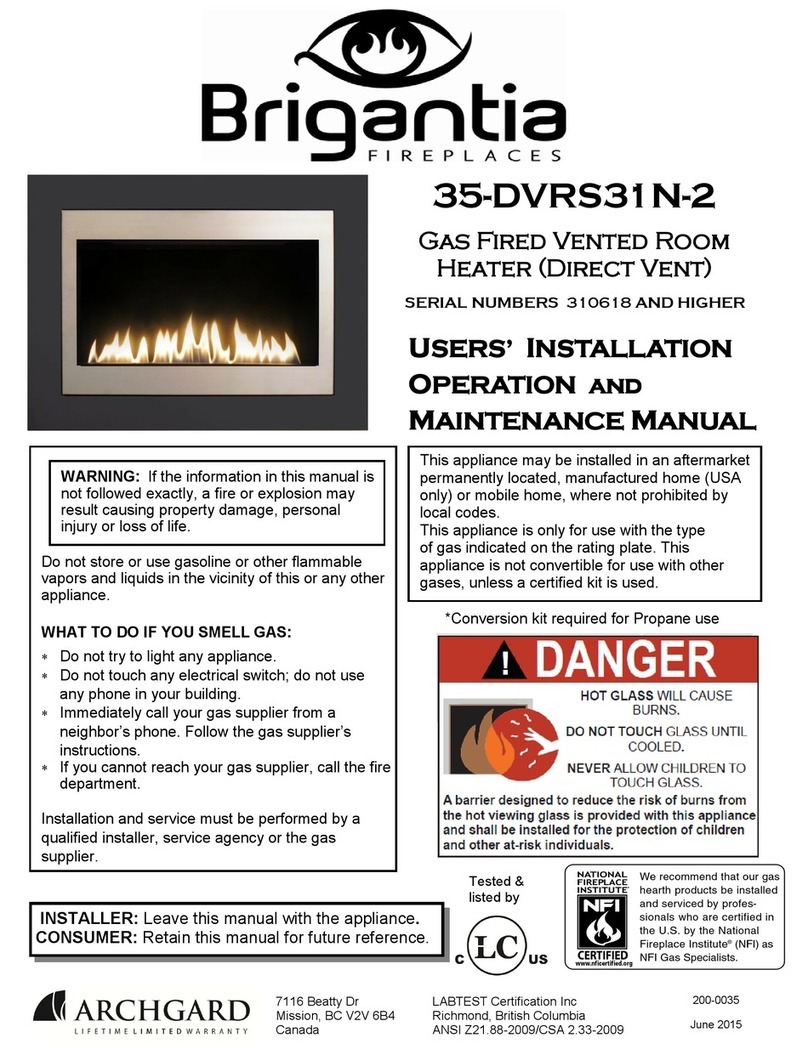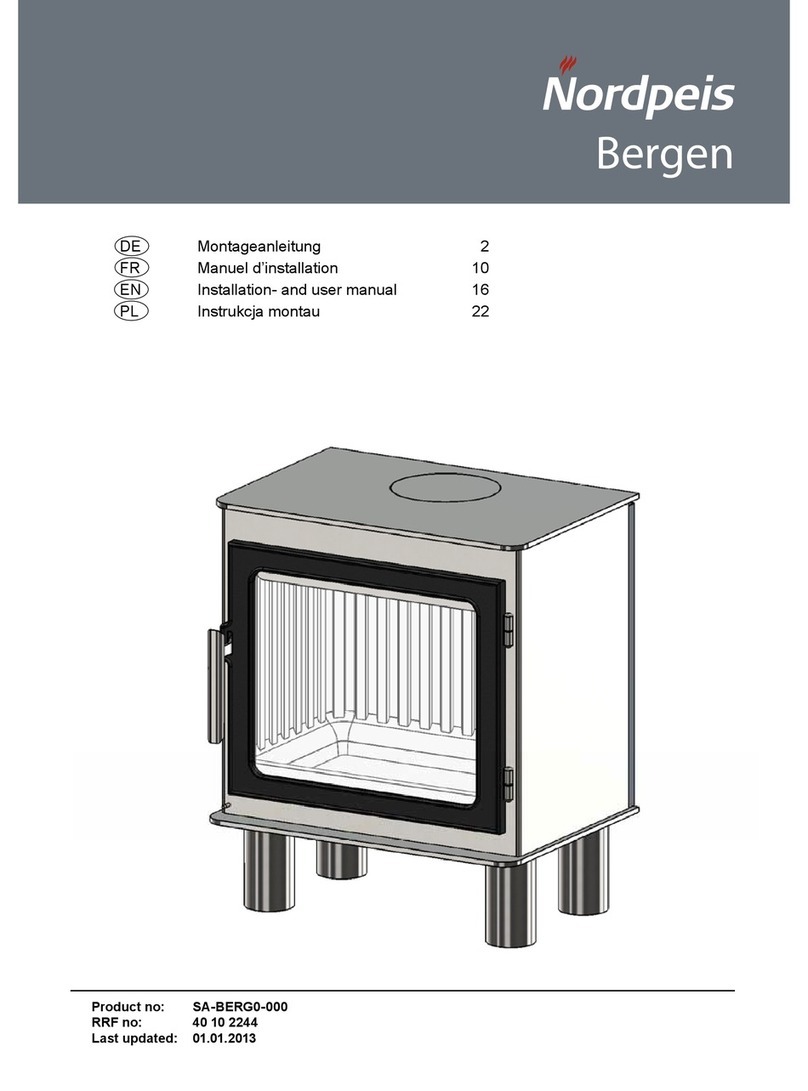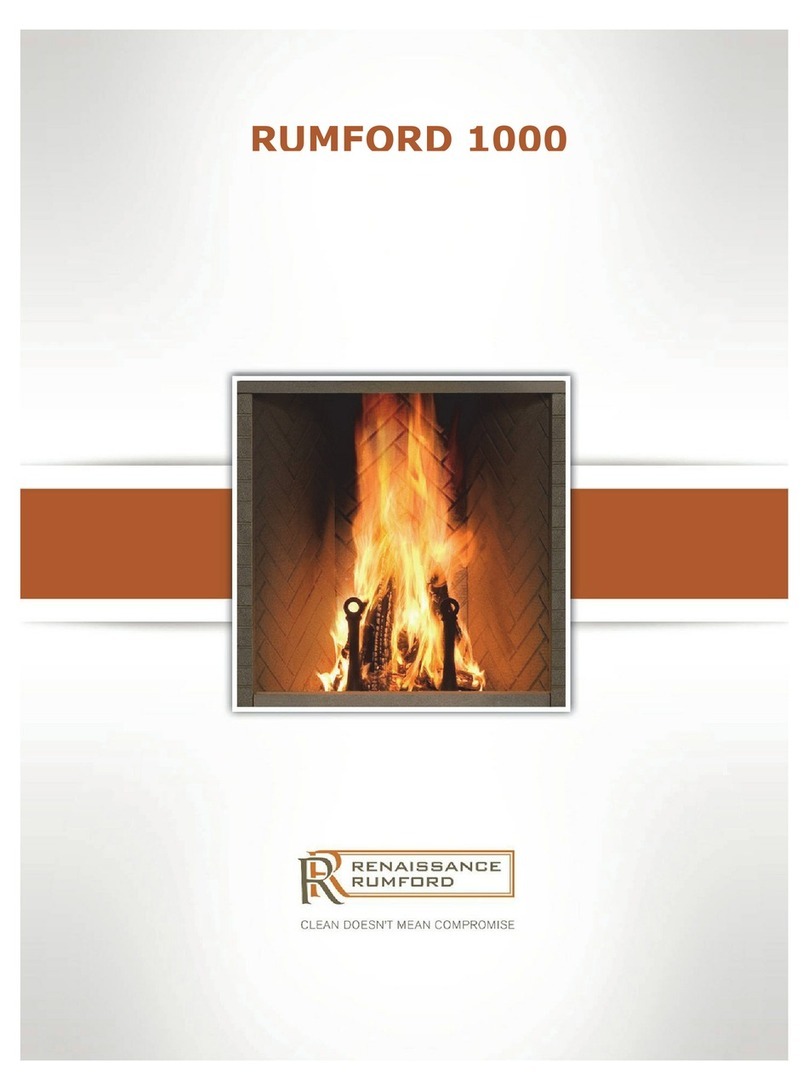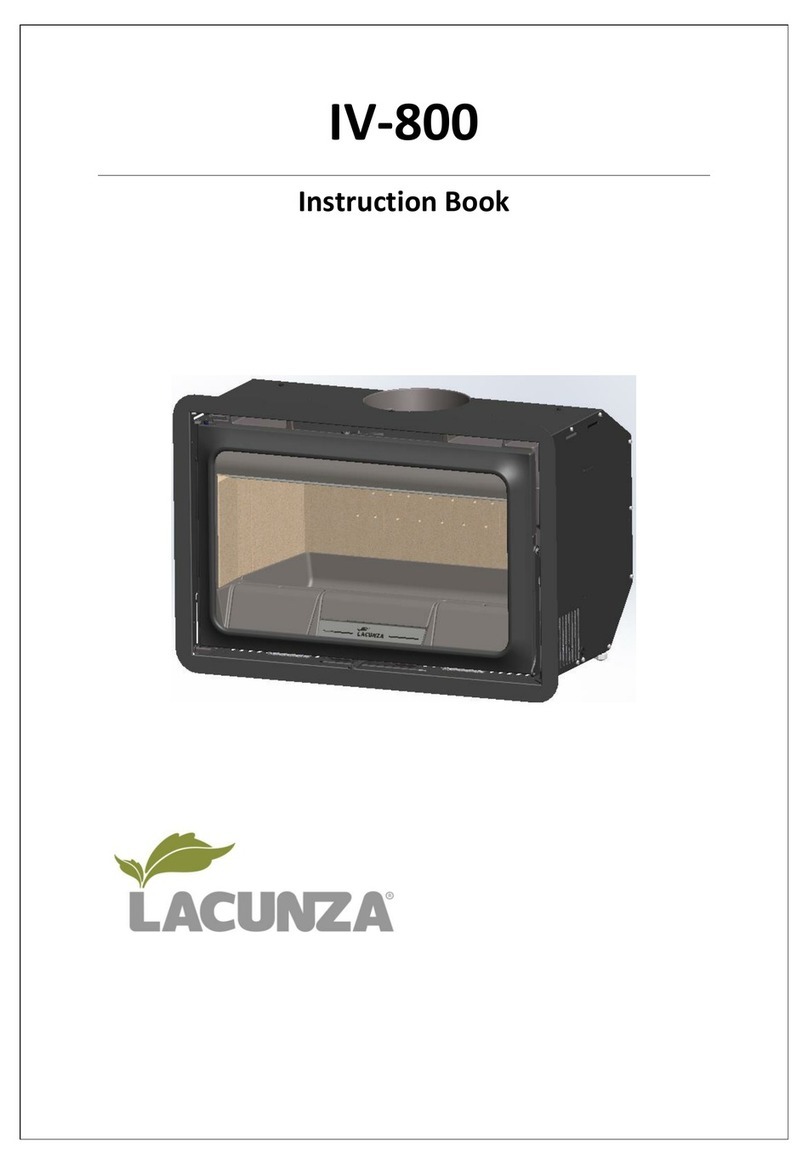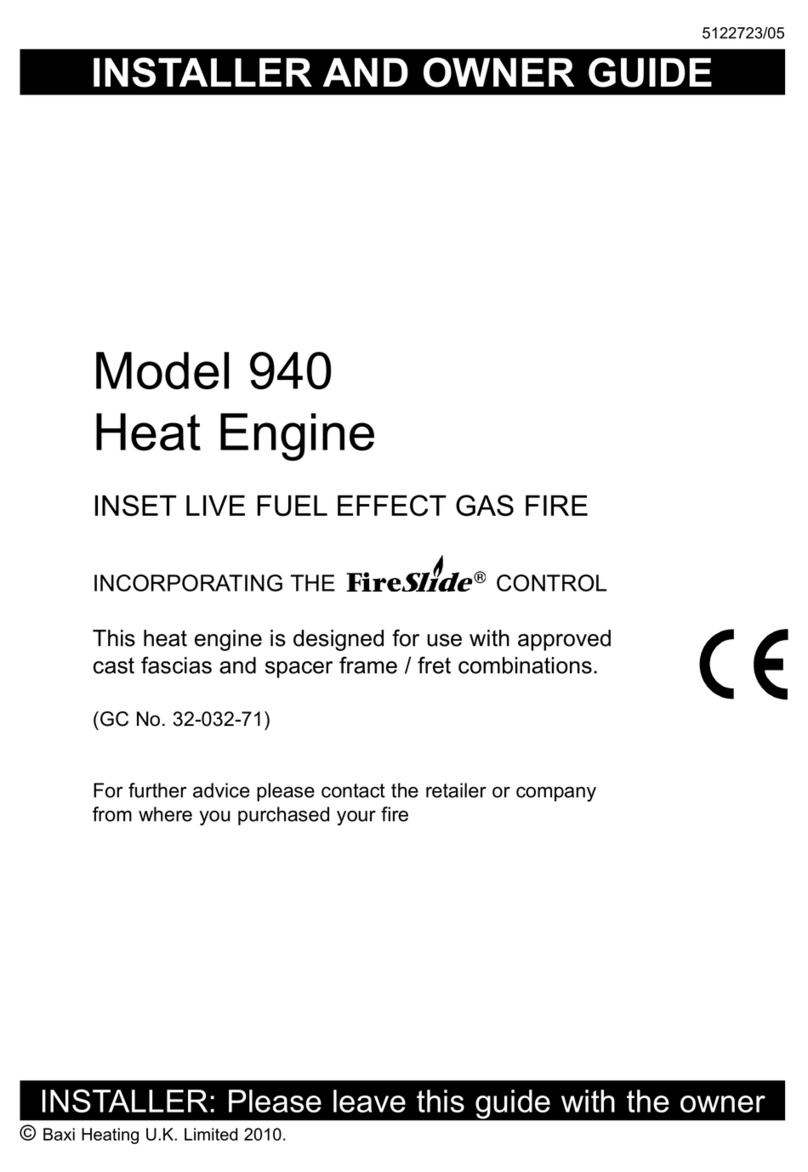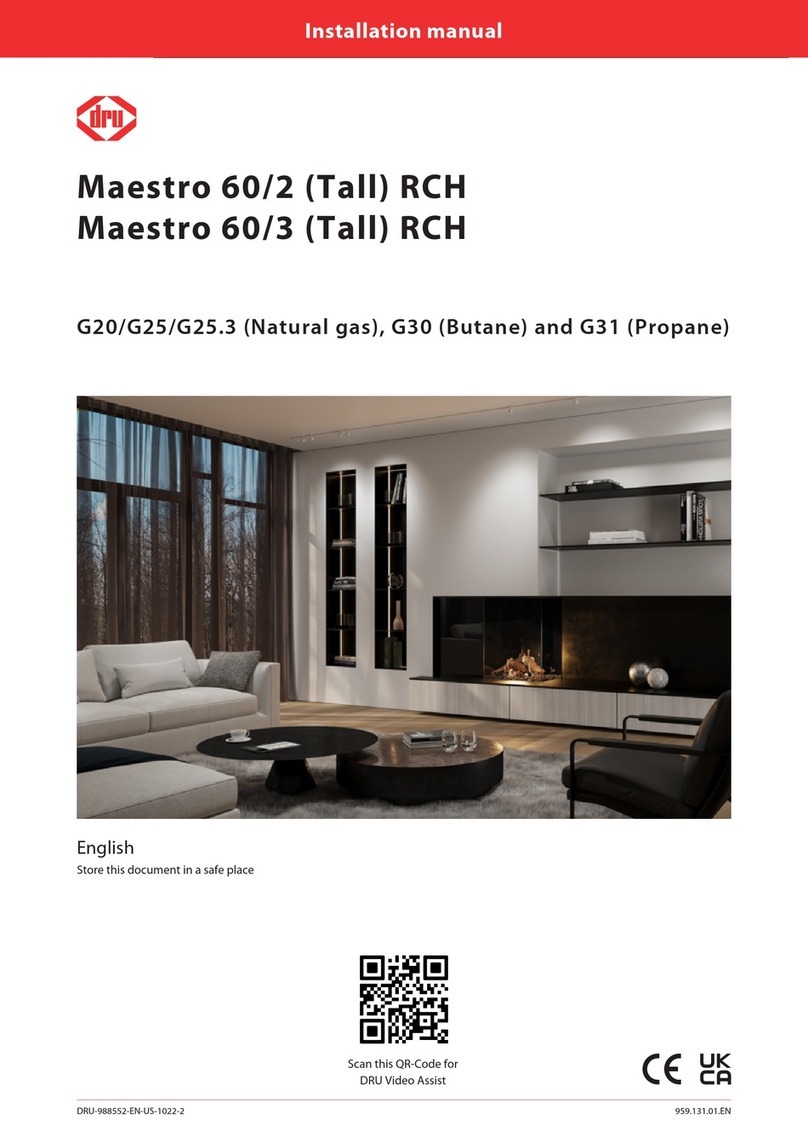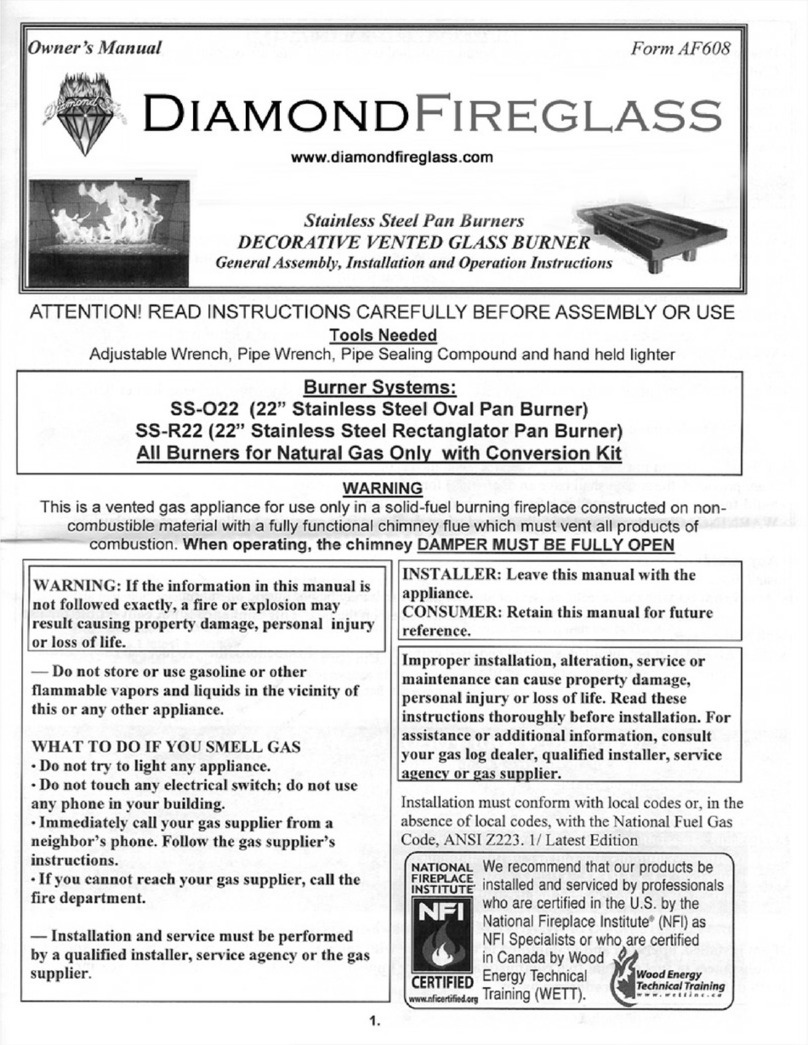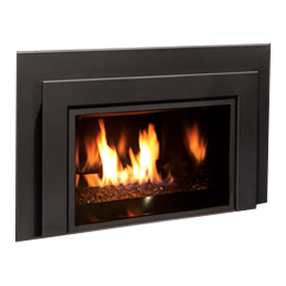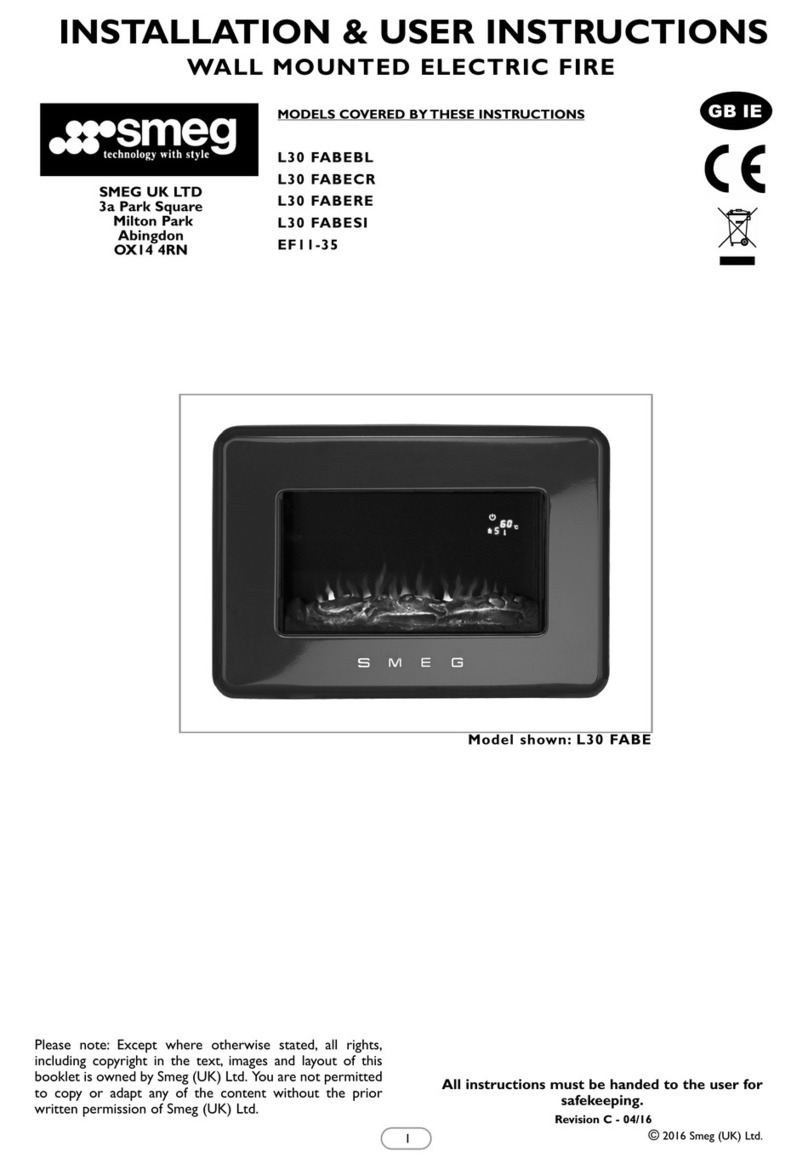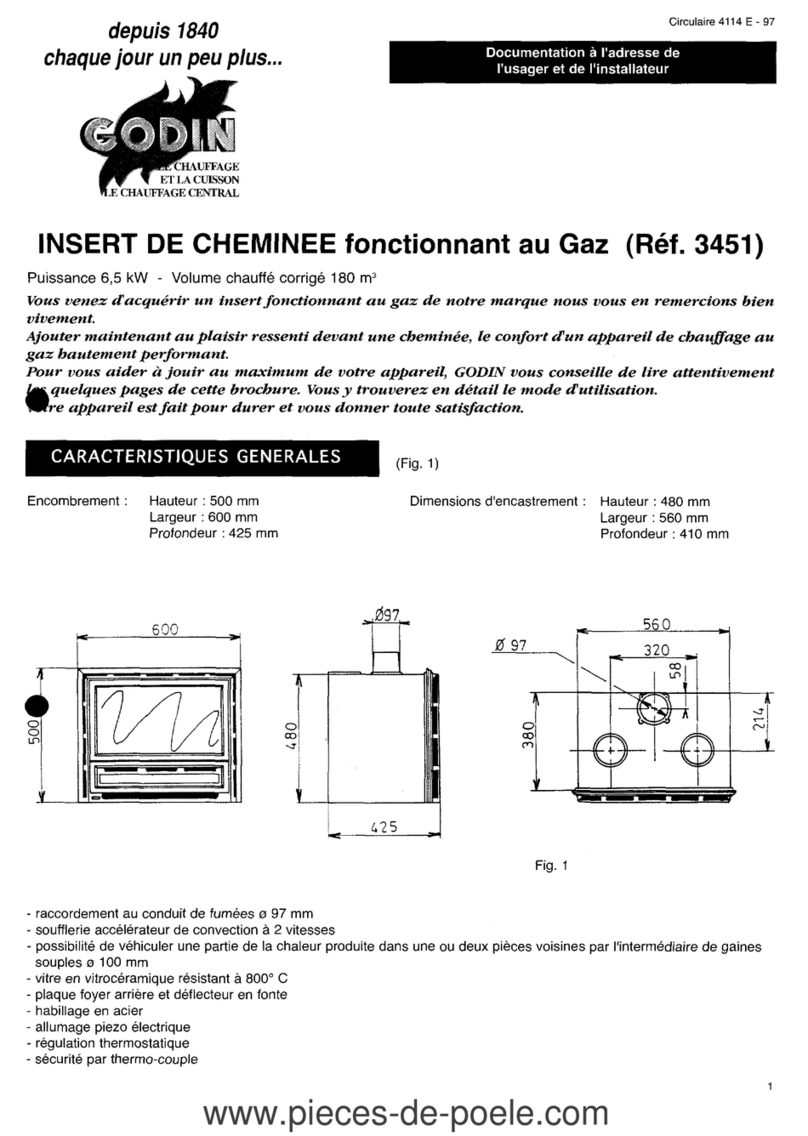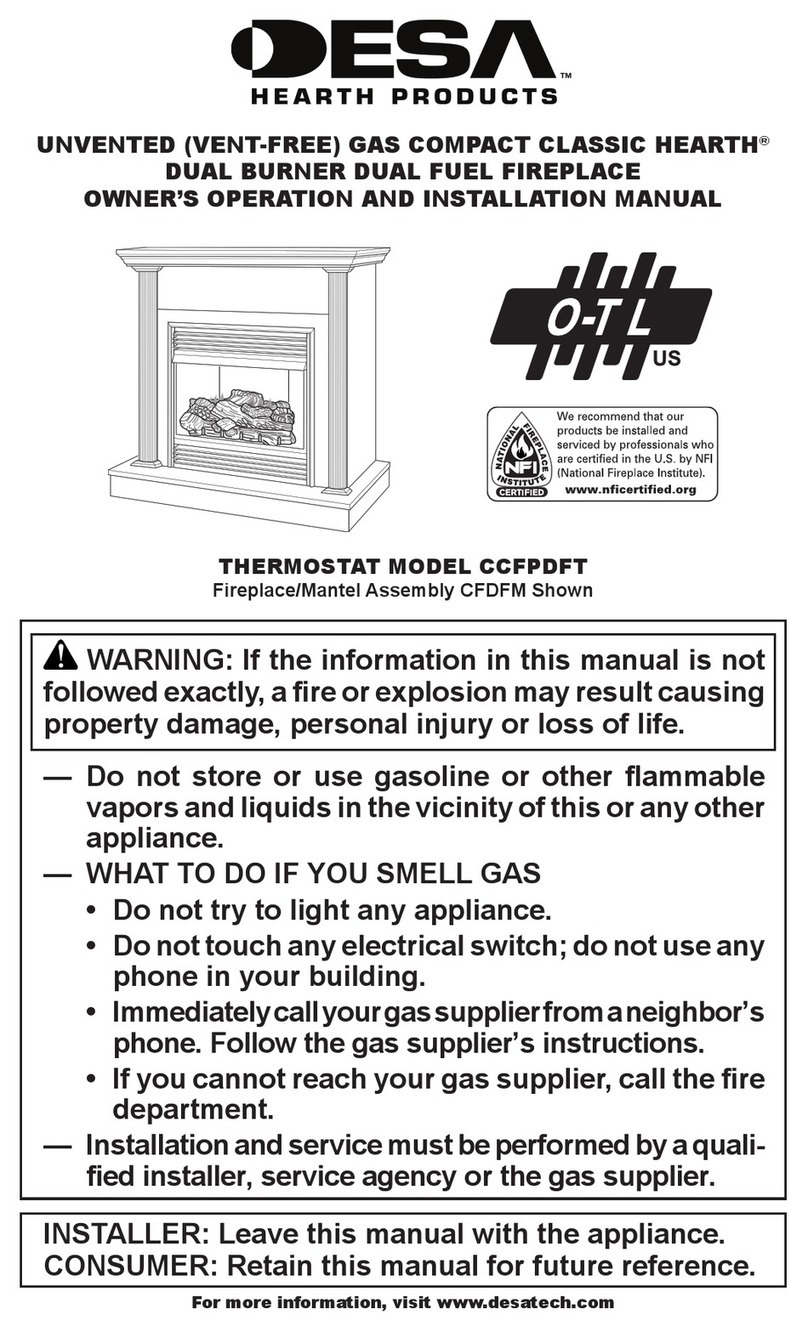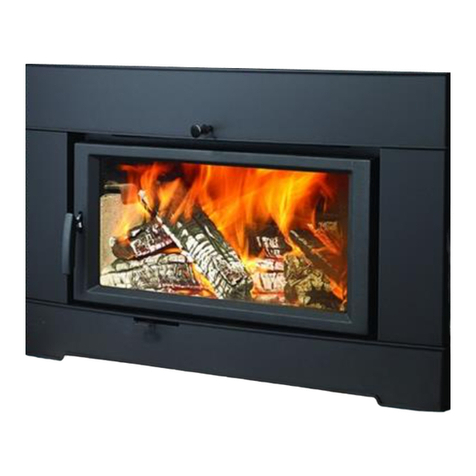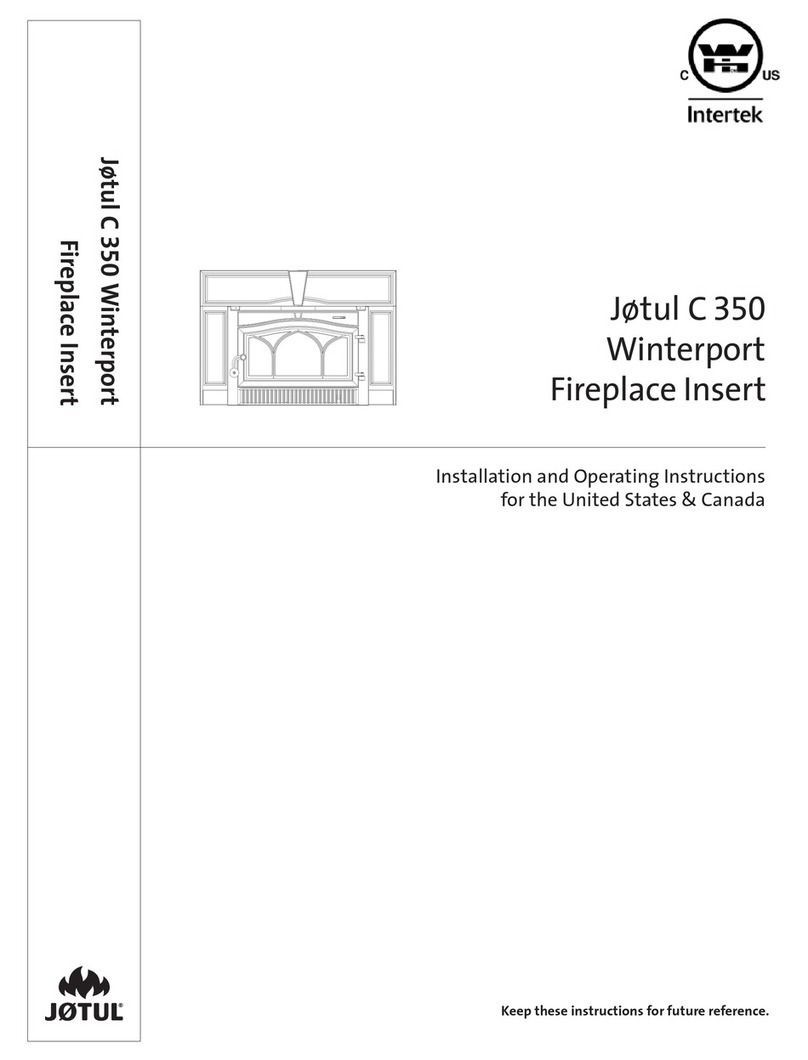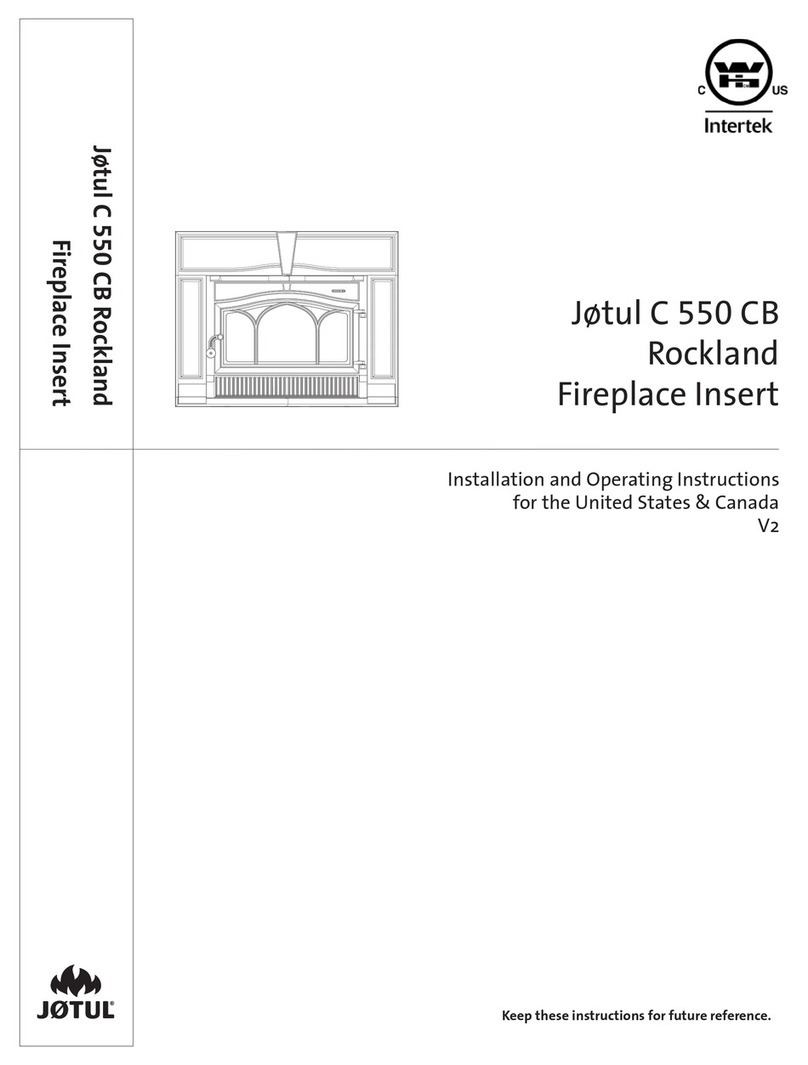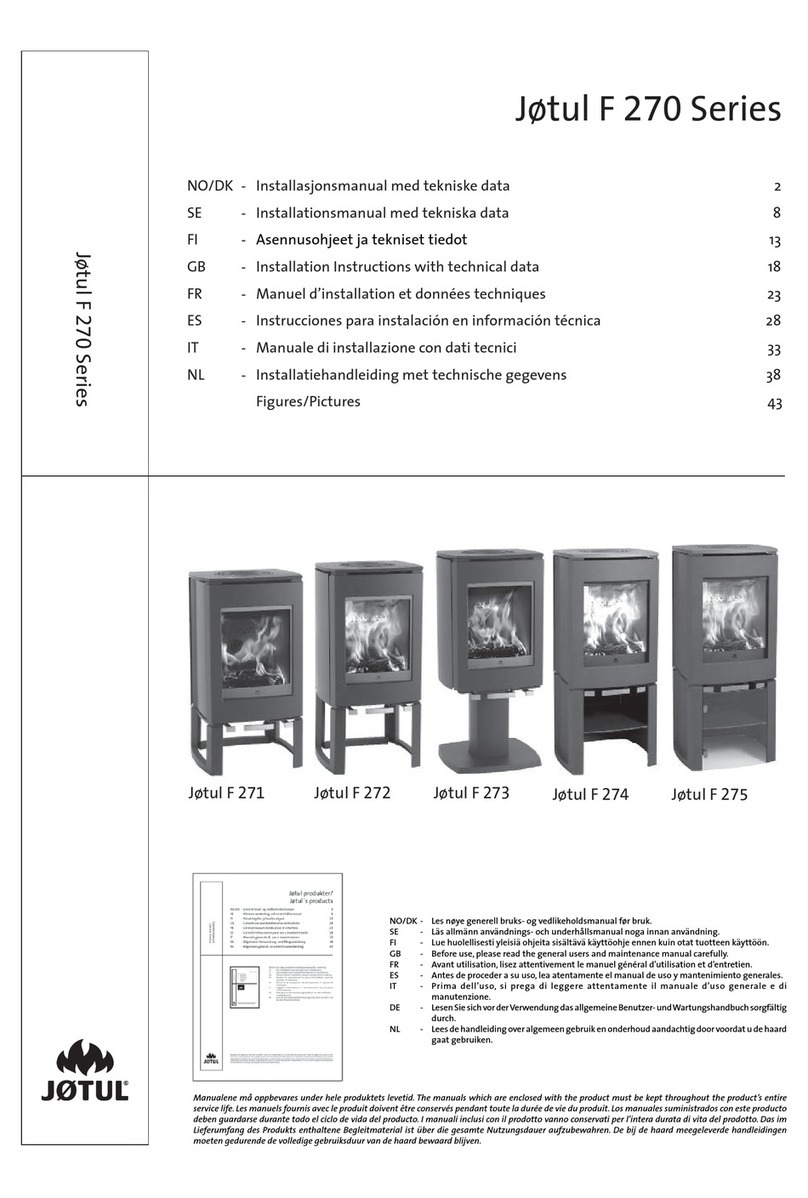6
The following guidelines give the necessary chimneyrequirements
based on the national code (ANSI-NFPA 211for the US. And CSA
CAN-B365 for Canada). However, many local codes differ from
the national code to take into account climate,altitude, or other
factors.
Notice:
It is important that you check with your local building officials
to find out what codes apply in your area before installing your
new Jøtul F 500.
Remember: Your local inspector(s) have the final authority in
approving your installation.It is always best to consult with them
prior to the installation.
2.2 Masonry Chimneys
When installing the Jøtul F 500 into a masonry chimney you must
conform to all of the following guidelines:
• Thechimneyfluesizeshould not be less than the cross-
sectional area of the stove flue collar.
• Thecross-sectionalareaoftheflueofachimneywithnowalls
exposed to the outside below the roofline shall not be more
than three times the cross-sectional area of the stove flue
collar.
• Thecross-sectionalareaoftheflueofachimneywithoneor
more walls exposed to the outside below the roofline shall
not be more than two times the cross-sectional area of the
stove flue collar.
• Largerchimneyfluesshouldberelinedwithalistedorcode
approved liner.
• Themasonrychimneymusthaveafireclaylinerorequivalent,
with a minimum thickness of 5/8” (16mm) and must be
installed with refractory mortar. There must be at least 1/4”
(6,35mm) air space between the flue liner and chimney
wall.
• Thefireclayfluelinermusthaveanominalsizeof8”X8”,and
shouldnotbelargerthan8”X12”.Ifaroundfireclaylineris
to be used it must have a minimum inside diameter of 6”
(157mm) and not larger than 8” (208mm) in diameter.
• Ifachimneywithlargerdimensionsistobeused,itshould
be relined with an appropriate liner that is code approved.
• Themasonrywallofthechimney,ifbrickormodularblock,
must be a minimum of 4”(106mm) nominal thickness. A
mountain or rubble stone wall must be at least 12” (310mm)
thick.
• Anewly-builtchimneymustconformtolocalcodesandin
theirabsencemustrecognizenationalregulations. W h e n
using an existing chimney, it must be inspected by a licensed
professional chimney sweep, fire official, or code officer, to
ensure that the chimney is in proper working order.
• Nootherappliancecanbeventedintothesameflue.
• Anairtightclean-outdoorshouldbelocatedatthebaseof
the chimney.
2.3 Prefabricated Chimneys
If a prefabricated metal chimney is to be used it must be a
chimney type that is tested and listed for use with solid fuel
burning appliances.
That means a chimney that is tested to the following:
HighTemperature (HT) Chimney Standard UL 103 for the U.S.and
High Temperature Standard ULC S-629 for Canada.
The manufacturer’s installation instructions must be followed
precisely. Always maintain the proper clearance to combustibles
as established by the pipe manufacturer. This clearance is usually
a minimum of 2”(56mm),although it may vary by manufacturer
or for certain chimney components.
2.4 Chimney Height
Whether a masonry chimney or prefabricated metal chimney is
used it must be the required height above the roof line.
The requirement is:
The chimney must be at least 3 feet higher than the highest point
where it passes through the roof and at least 2 feet higher than
the highest part of the roof or structure that is within 10 feet of
thechimney,measuredhorizontally.See figure 3.
Chimneys shorter than 14 feet may not provide adequate draft.
This could result in smoke spilling into the room from the stove
when loading the stove, or when the door is open. In addition,
inadequate draft can cause back puffing, which is a build up of
gases inside the firebox.
Other times,chimney height can create excessive draft which can
cause high stove temperatures and short burn times. Excessive
drafts can be corrected by installing a butterfly damper. If you
suspect you have a draft problem, consult your dealer.
2.5 Wall Pass-throughs
When your installation unavoidably requires the chimney
connector to pass through a combustible wall to reach the
chimney,always consult your local building officials,and be sure
any materials to be used have been tested and listed for wall
pass-throughs.
In the U.S.
The National Fire Protection Association’s publication, NFPA
211, Standard for Chimneys, Fireplaces, Vents and Solid Fuel
Burning Appliances permits four methods for passing through
a combustible wall. Before proceeding with any method be sure
to consult with your local building officials to discuss any local
code requirements.
Common Method:
• Whenpassing throughacombustiblewalltoamasonry
chimney this method requires the removal of all combustible
materials from at least 12” (310mm) around the chimney
connectors proposed location. With a 6” (157mm)round liner
the minimum area required would be 31” x 31” (792x792mm)
square.
• Thespaceisthenfilledwithatleast12”(310mm)ofbrickaround
a fireclay liner. Remember, the liner must be ASTM C35 or
equivalent, with a minimum wall thickness of 5/8” (16mm).
• Itisimportant to remembertolocatethepass-throughat
least 18”(457mm) from the ceiling for proper clearance to
combustibles.
• Itwillbenecessarytocutwallstuds,installheaders,and
construct a sill frame to maintain the proper dimensions and
to support the weight of the brick.
• Thebricksmustbesolidbrickwithaminimumof
• 31/4“(83mm)thick(4”(106mm)nominal).
• Refractorymortarmustbeusedatthejunctionofthechimney
and the pass-through liner. The pass-through liner must not
penetrate the chimney liner beyond the inner surface of the
chimney liner. Use extreme care when constructing the hole
in the chimney liner, the tiles can shatter easily. See figure 4.
USA/cAnAdA
